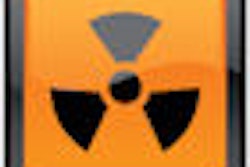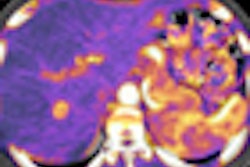Wednesday, December 2 | 11:30 a.m.-11:40 a.m. | SSK11-07 | Room S102D
The Netherlands guidelines issued in 2007 for administering iodine-based contrast media recommend determining renal function before contrast-enhanced CT in patients 60 years and older with diabetes mellitus, heart failure, vascular disease, hypertension, history of renal disease, or urologic disease.Dr. Helena Dekker and colleagues from Radboud University Nijmegen Medical Center in Nijmegen sought to update the guidelines with the assessment of their CT population of 319 consecutive patients scanned over two weeks.
The four-variable modification of diet in renal disease (MDRD) equation was used and serum creatinine evaluated in all of the patients. Contrast-induced nephropathy (CIN) was defined by an increase in serum creatinine of greater than 25%.
There was one patient with CIN, and six patients had a baseline MDRD scores greater than 60. The doses of contrast medium used varied from 80-200 mL; after contrast administration, their serum creatinine levels increased by more than 25%, resulting in an MDRD less than 60. The patients were followed for three months.
"In our study, the incidence of CIN was low," Decker said. "Unfortunately, our data will give an underestimation because the MDRD was not evaluated in all patients on a regular basis."
Guidelines are obligatory at contrast-enhanced CT in order to identify patients at risk for nephropathy and to prevent CIN, the authors concluded. "Nowadays we control the renal function of the patients scheduled for contrast-enhanced CT -- and control the completeness of the request," Dekker said.



















